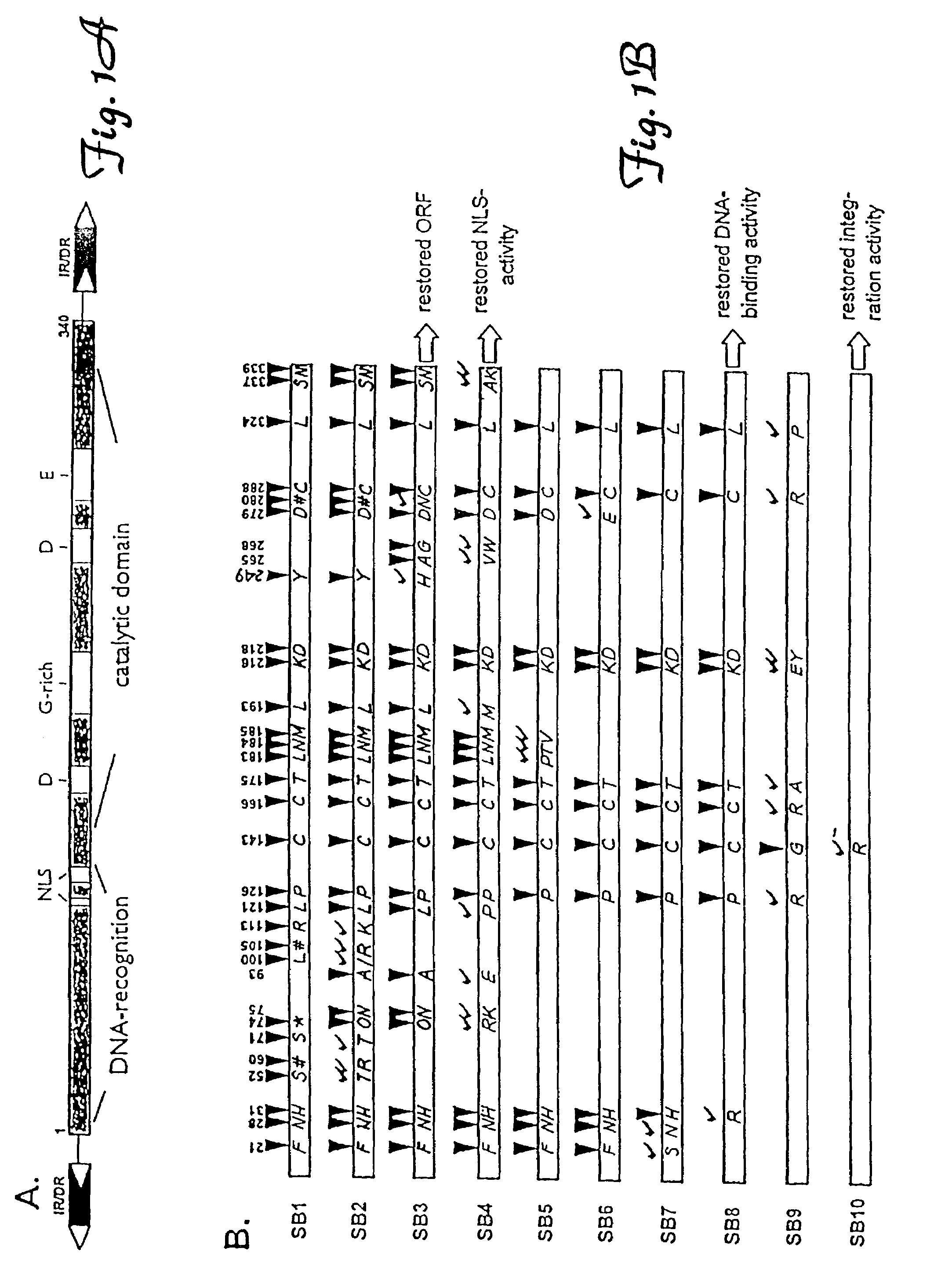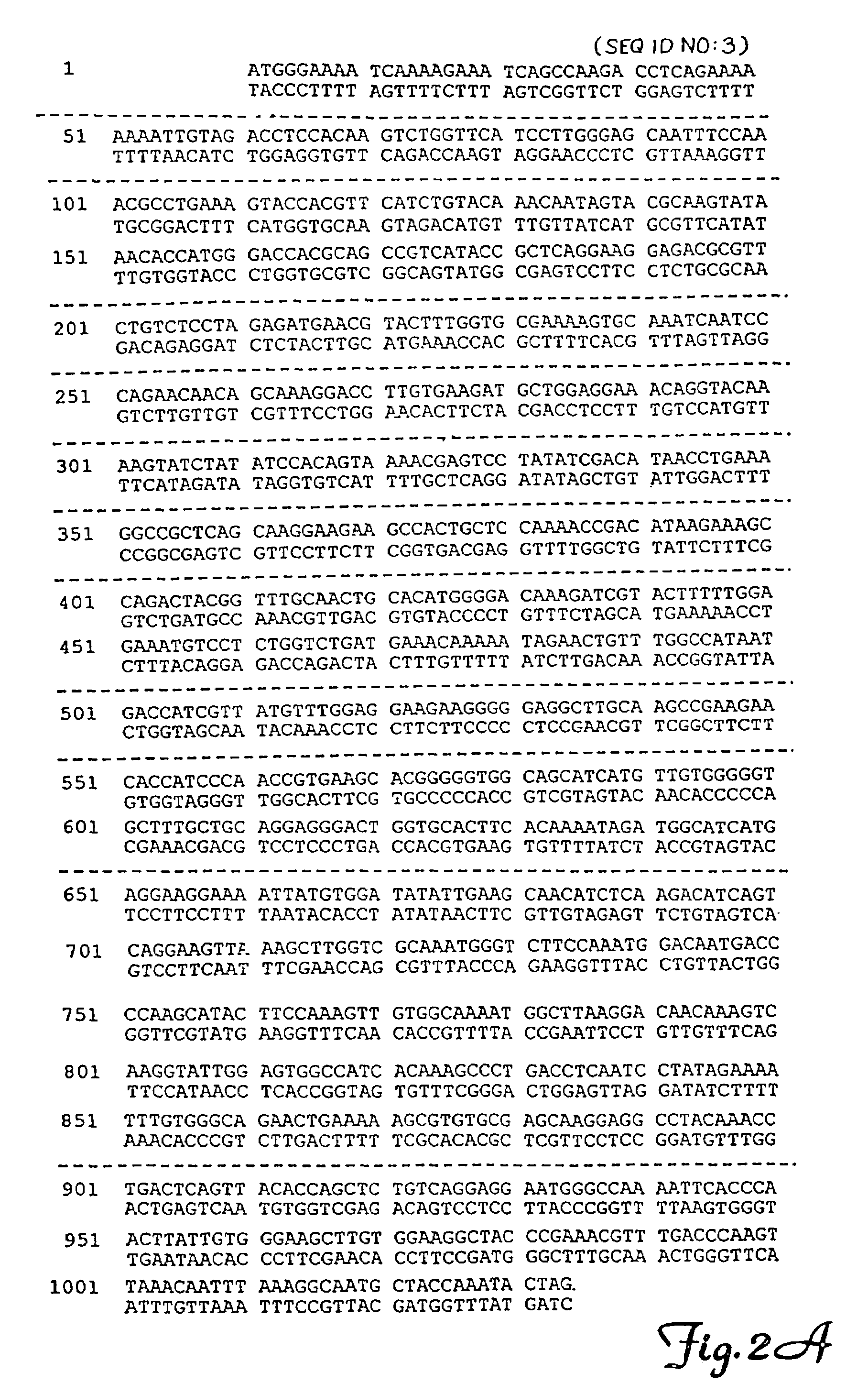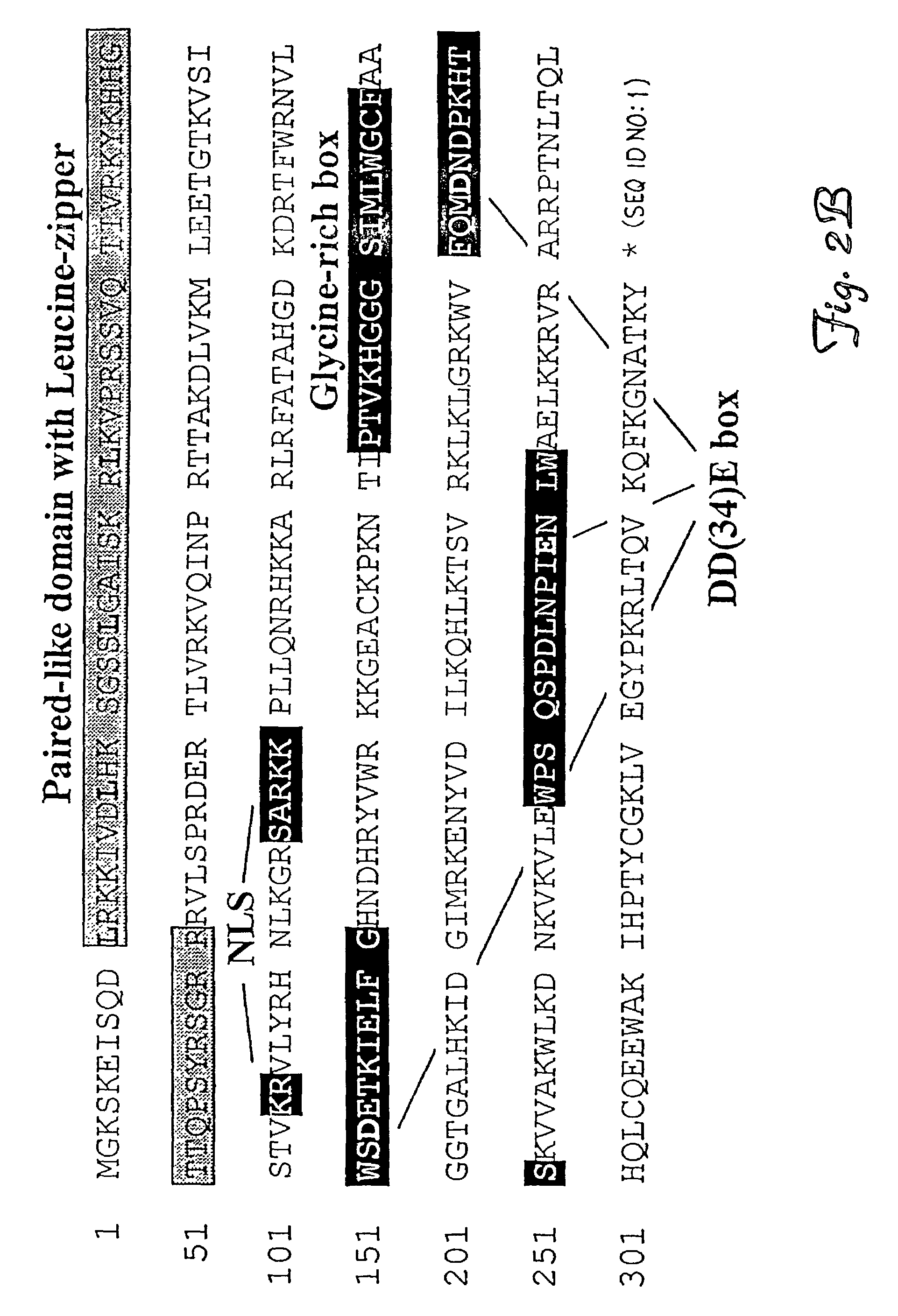Nucleic acid transfer vector for the introduction of nucleic acid into the DNA of a cell
a nucleic acid and transfer vector technology, applied in the direction of genetic material ingredients, immunoglobulins against animals/humans, organic chemistry, etc., can solve the problem of inactive transposition of all elements isolated from natur
- Summary
- Abstract
- Description
- Claims
- Application Information
AI Technical Summary
Problems solved by technology
Method used
Image
Examples
example 1
Reconstruction of an SB Transposase
[0093]Gene reconstruction-Phase 1: Reconstruction of a transposase open reading frame. The Tss1.1 element from Atlantic salmon (GenBank accession number L12206) was PCR-amplified using a primer pair flanking the defective transposase gene, FTC-Start and FTC-Stop to yield product SB1. Next, a segment of the defective transposase gene of the Tss1.2 element (L12207) was PCR-amplified using PCR primers FTC-3 and FTC-4, then further amplified with FTC-3 and FTC-5. The PCR product was digested with restriction enzymes NcoI and BlpI, underlined in the primer sequences, and cloned to replace the corresponding fragment in SB1 to yield SB2. Then, an approximately 250 bp HindIII fragment of the defective transposase gene of the Tsg1 element from rainbow trout (L12209) was isolated and cloned into the respective sites in SB2 to result in SB3. The Tss1 and Tsg1 elements were described in (Radice et al., 1994) and were kind gifts from S. W. Emmons...
example 2
Preparation of a Nucleic Acid Fragment with Inverted Repeat Sequences
[0102]In contrast to the prototypic Tc1 transposon from Caenorhabditis elegans which has short, 54-bp indirect repeat sequences (IRs) flanking its transposase gene, most TcEs in fish belong to the IR / DR subgroup of TcEs (Ivics et al., 1996; Izsvak et al., 1995, both supra) which have long, 210–250 bp IRs at their termini and directly repeated DNA sequence motifs (DRs) at the ends of each IR (FIG. 1A). However, the consensus IR sequences are not perfect repeats (i.e., similar, but not identical) indicating that, in contrast to most TcEs, these fish elements naturally possess imperfect inverted repeats. The match is less than 80% at the center of the IRs, but is perfect at the DRs, suggesting that this nonrandom distribution of dissimilarity could be the result of positive selection that has maintained functionally important sequence motifs in the IRs (FIG. 3). Therefore, we suspected that DNA sequences at and around...
example 3
DNA Specificity of an SB Transposase
[0104]There are at least two distinct subfamilies of TcEs in the genomes of Atlantic salmon and zebrafish, Tss1 / Tdr1 and Tss2 / Tdr2, respectively. Elements from the same subfamily are more alike, having about 70% nucleic acid identity, even when they are from two different species (e.g., Tss1 and Tdr1) than members of two different subfamilies in the same species. For example, Tdr1 and Tdr2 are characteristically different in their encoded transposases and their inverted repeat sequences, and share only about 30% nucleic acid identity. It may be that certain subfamilies of transposons must be significantly different from each other in order to avoid cross-mobilization. A major question is whether substrate recognition of transposases is sufficiently specific to prevent activation of transposons of closely related subfamilies.
[0105]We have shown that the 12-bp DRs of salmonid-type elements, identical to the DRs of zebrafish-type TcEs, are part of th...
PUM
| Property | Measurement | Unit |
|---|---|---|
| pH | aaaaa | aaaaa |
| pH | aaaaa | aaaaa |
| pH | aaaaa | aaaaa |
Abstract
Description
Claims
Application Information
 Login to View More
Login to View More - R&D
- Intellectual Property
- Life Sciences
- Materials
- Tech Scout
- Unparalleled Data Quality
- Higher Quality Content
- 60% Fewer Hallucinations
Browse by: Latest US Patents, China's latest patents, Technical Efficacy Thesaurus, Application Domain, Technology Topic, Popular Technical Reports.
© 2025 PatSnap. All rights reserved.Legal|Privacy policy|Modern Slavery Act Transparency Statement|Sitemap|About US| Contact US: help@patsnap.com



